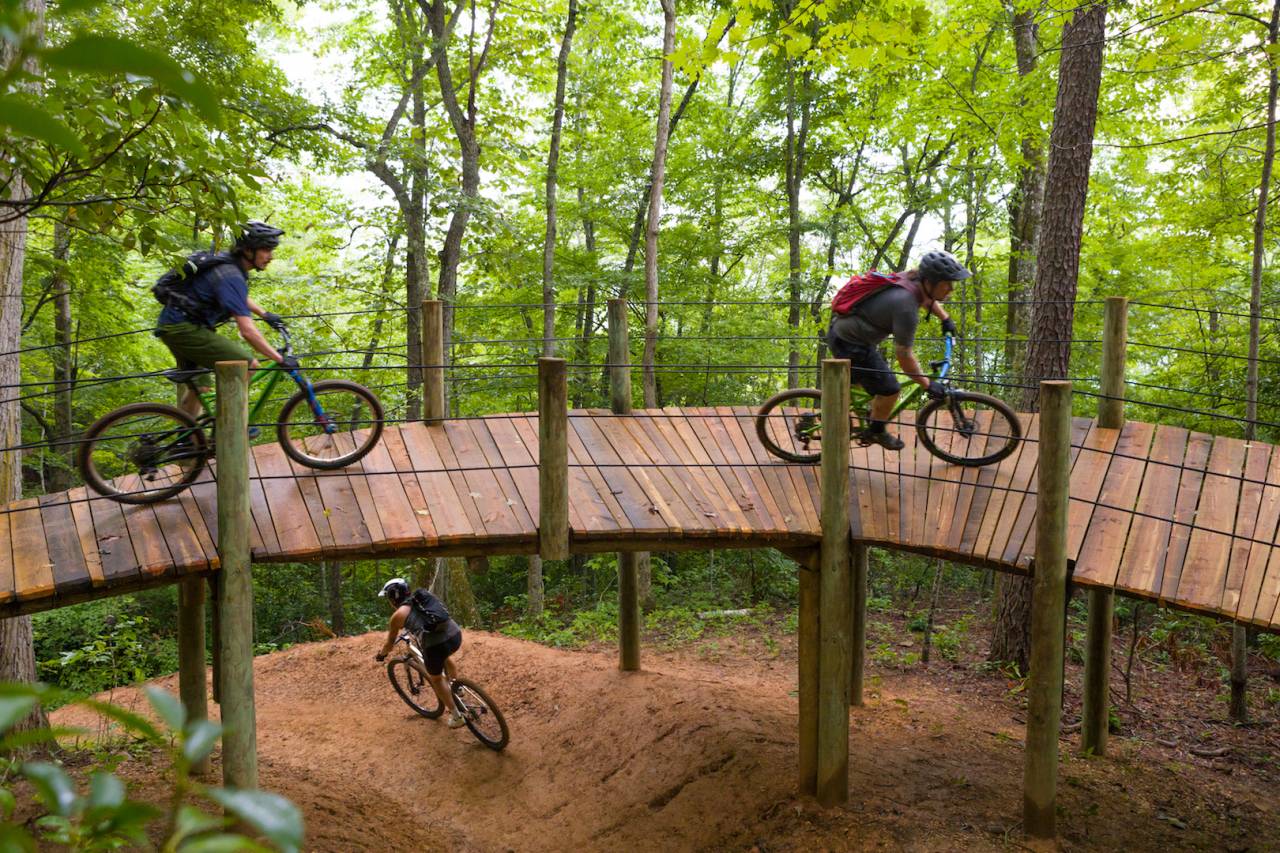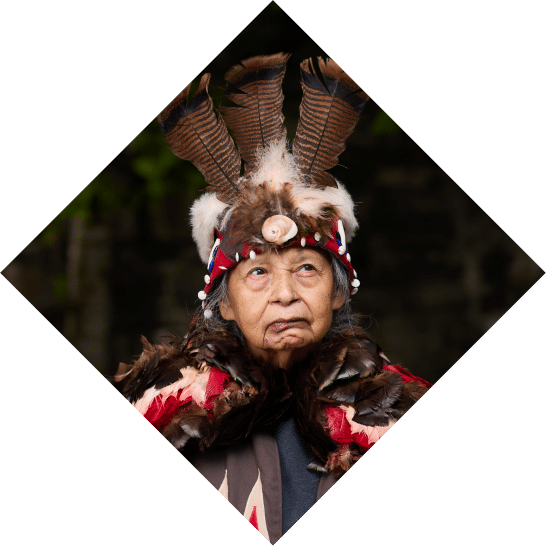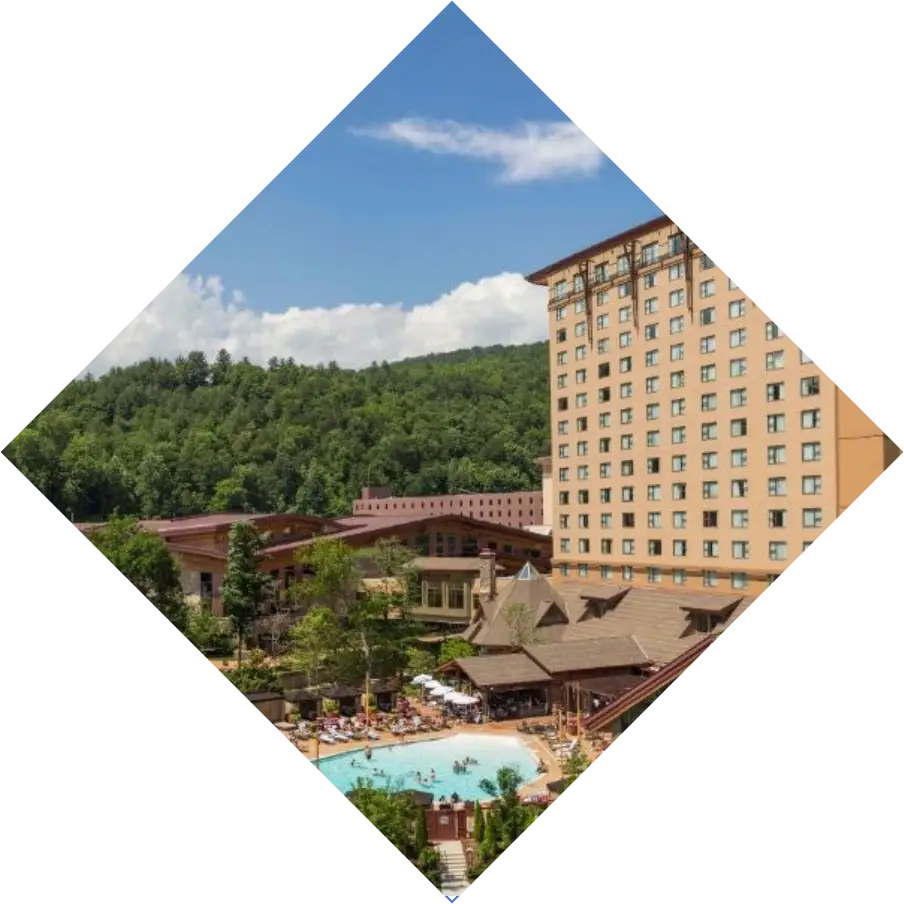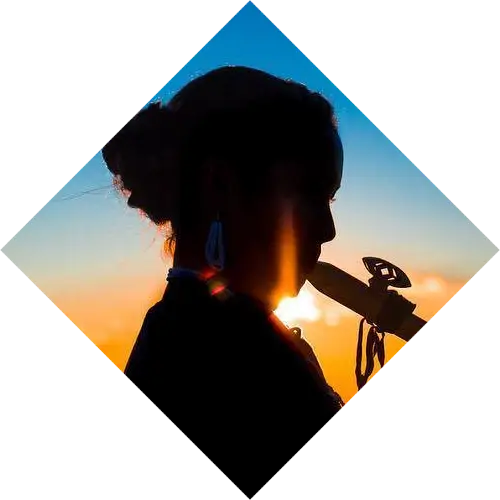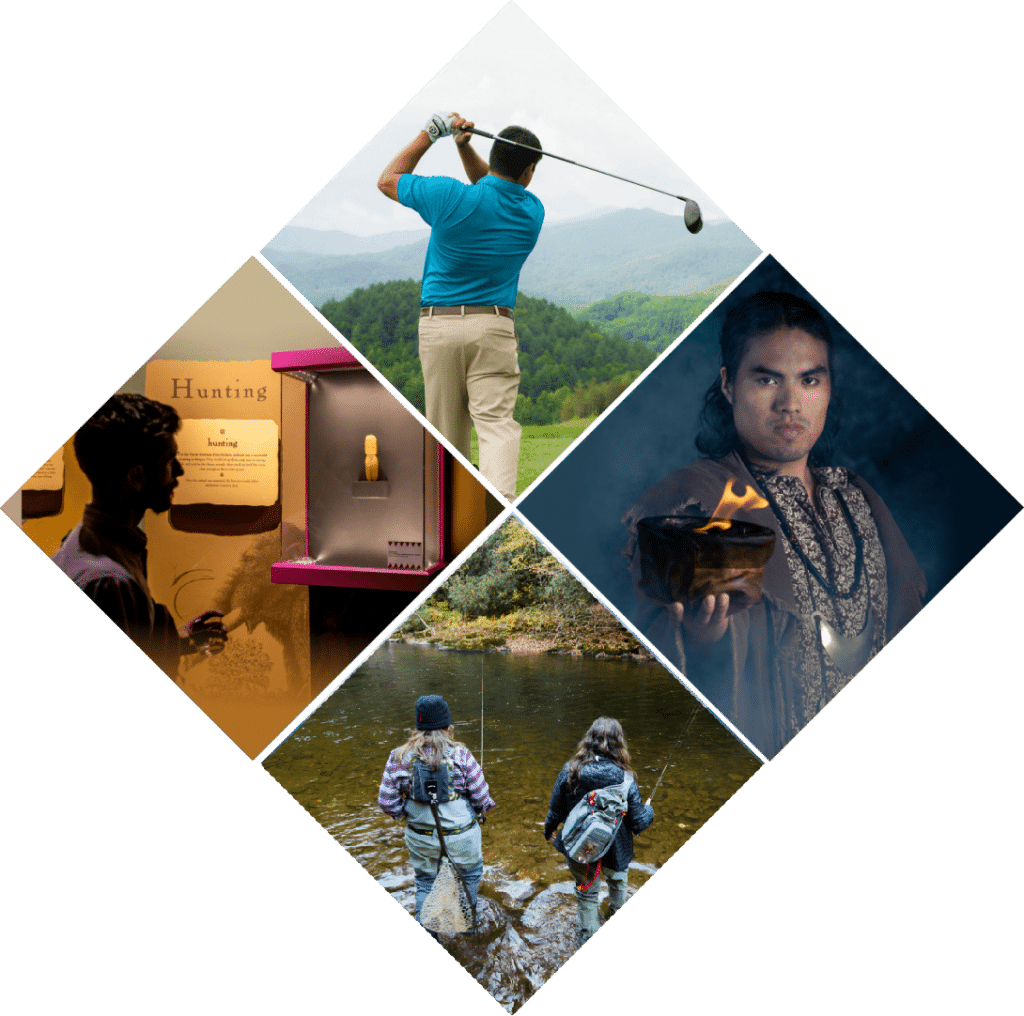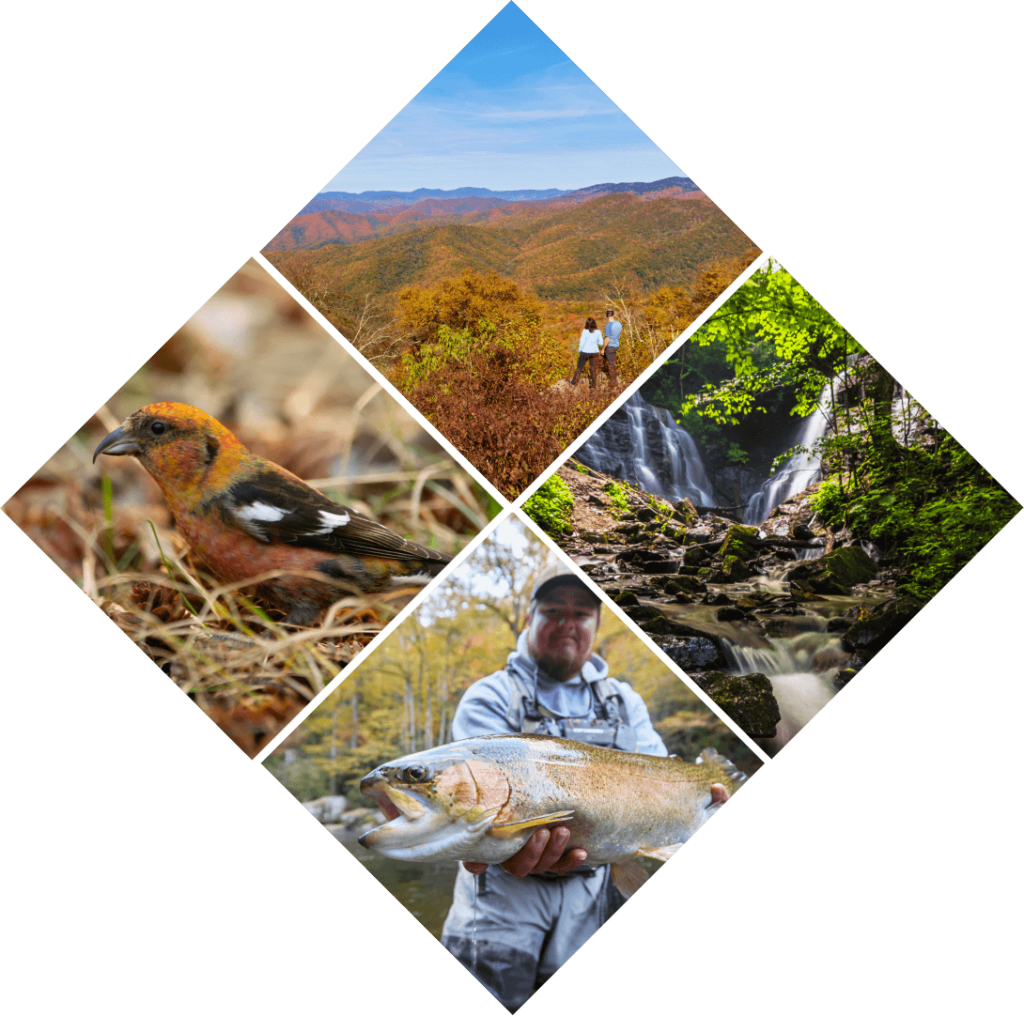November is Native American Heritage Month—a time to celebrate rich and diverse native cultures, traditions, and histories, and to acknowledge the important contributions of native people. As we near the season to gather with friends and loved ones, we want to spotlight some of the Cherokee voices we’ve featured on the blog over the years, reflecting on what it is that makes Cherokee culture so special and unique. So many of our visitors say that coming to Cherokee is like coming home. If you’ve been before, you understand why, and if you haven’t yet, then we invite you to visit and find out for yourself.

“I love to share my culture with friends and my mom says one day I can share it with the world.”
– Nevayah Panther, (shown), Little Miss Cherokee 2016-17.
“As a Cherokee artist, I am humbled by the forms and techniques of our ancient culture,” says Joshua Adams, (pictured), guest curator for the exhibit “Renewal of the Ancient: Cherokee Millennial Artists,” showing now at the Museum of the Cherokee Indian. “Art has always been the vessel used by our people to solidify our unique vision of the world. We must all encourage young Cherokee artists to discover the unprecedented amount of inspiration found within the past.”
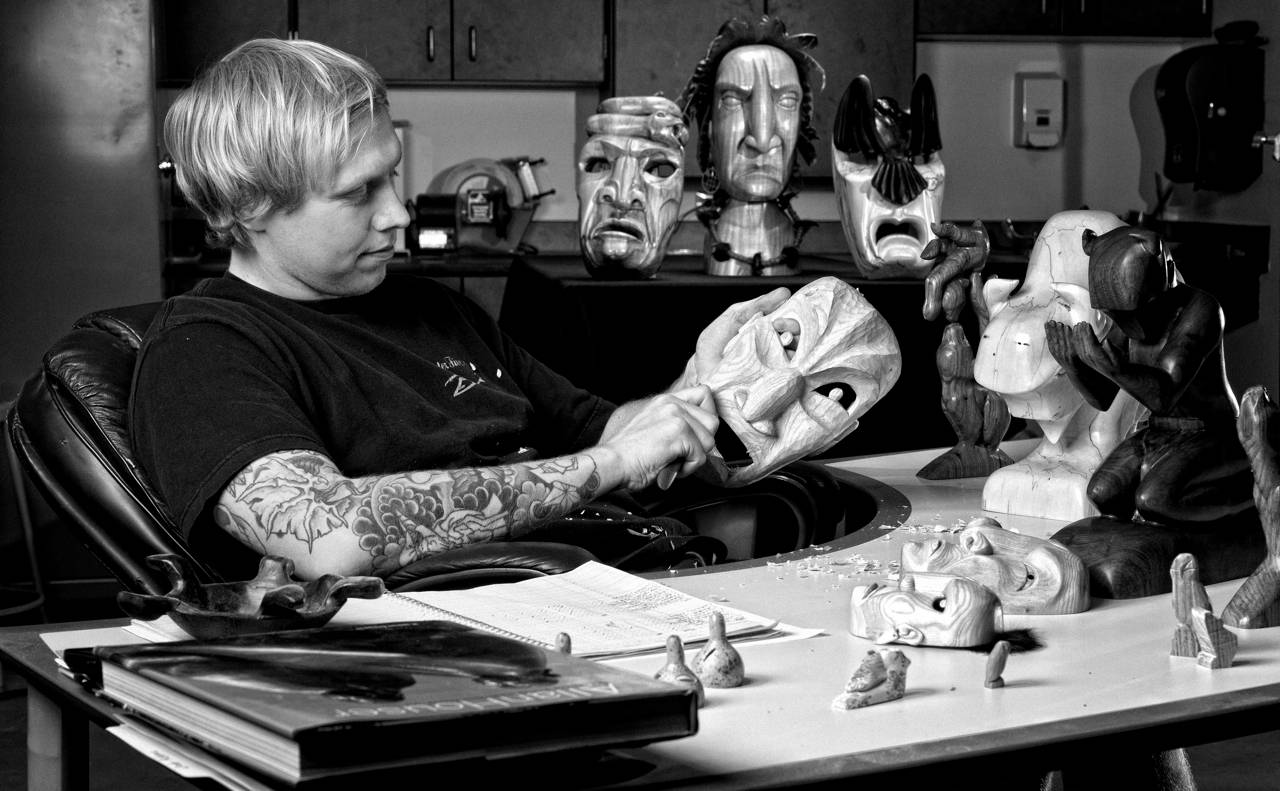
“It’s a fun culture, a grateful culture. We love to laugh. We love to joke,” says Daniel Tramper, talking about powwow culture. He is the EBCI Powwow producer and owner of Deer Clan Productions. Daniel’s wife, Teresa Reed, says that you don’t have to be related by blood to feel like family at a powwow. “When you are out there, you are part of the family.”
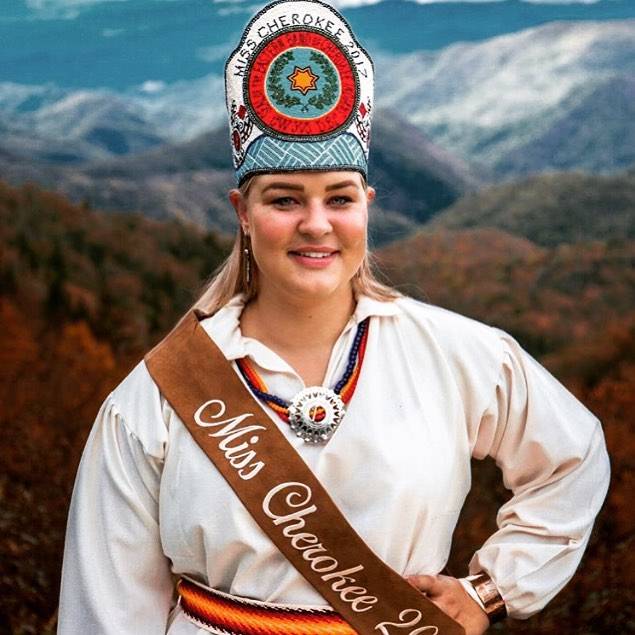
“The Cherokee people are still here, we’re still alive, we’re still prominent. Even if we’re in a small community, we still reach across the nation,” says Faith Long, Miss Cherokee 2017-18 (pictured ). She adds, “I believe, personally, that the Cherokee people are one of the most resilient tribes in the United States—to go through what my ancestors went through and to still try and better the community instead of giving up.”
“Preserving the culture and passing these traditions—our ways, our stories, our songs, our dances, our material culture—down to the future generations. We’re focused on seeing these things into the future, and that’s really our ultimate goal,” says Mike Crowe of the Cherokee Friends program at the Museum of the Cherokee Indian.
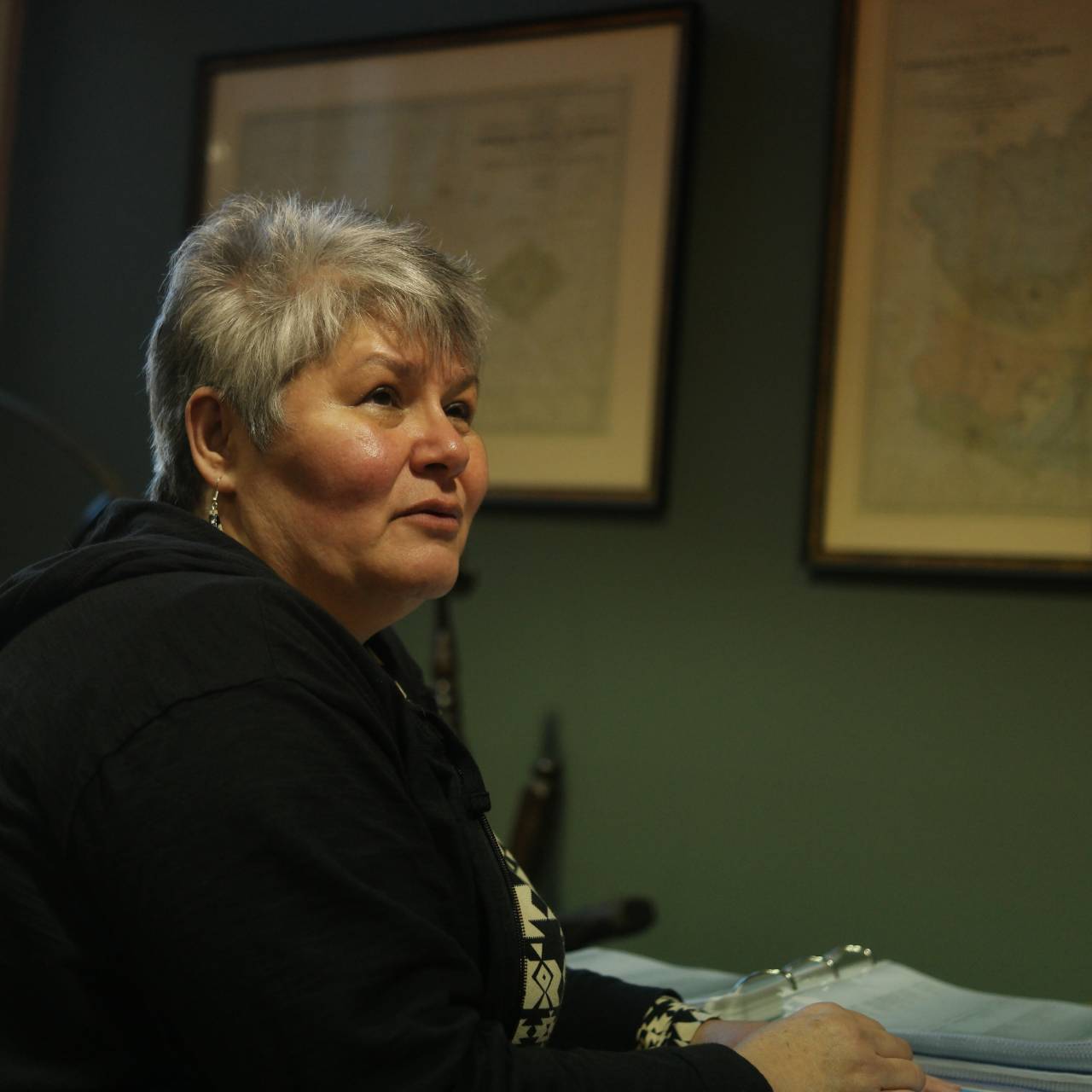
Robin Swayney (PICTURED) is a Genealogist at the Museum of the Cherokee PEOPLE When she moved back to Cherokee to be closer to family, she became interested in her family history. “It’s putting those pieces together to make your picture of who you are and where you come from. It’s those family stories you’ve heard all your life—it adds validity to them.”
“Part of our charge is keeping [children] in the [Cherokee] language,” says Bo Lossiah, Curriculum, Instruction & Community Supervisor at the New Kituwah Academy, a Cherokee language immersion school (preschool to 6th grade).
“In our culture, we believe that all things are connected,” says Louise Goings, (pictured), a prominent Cherokee basketmaker. Her husband, Butch, is a celebrated wood carver. “Therefore, we try to use all the skills and knowledge we have to strengthen our community. Even though we are known for basket making and carving, we also use other skills and knowledge we have to help our community,” she says.
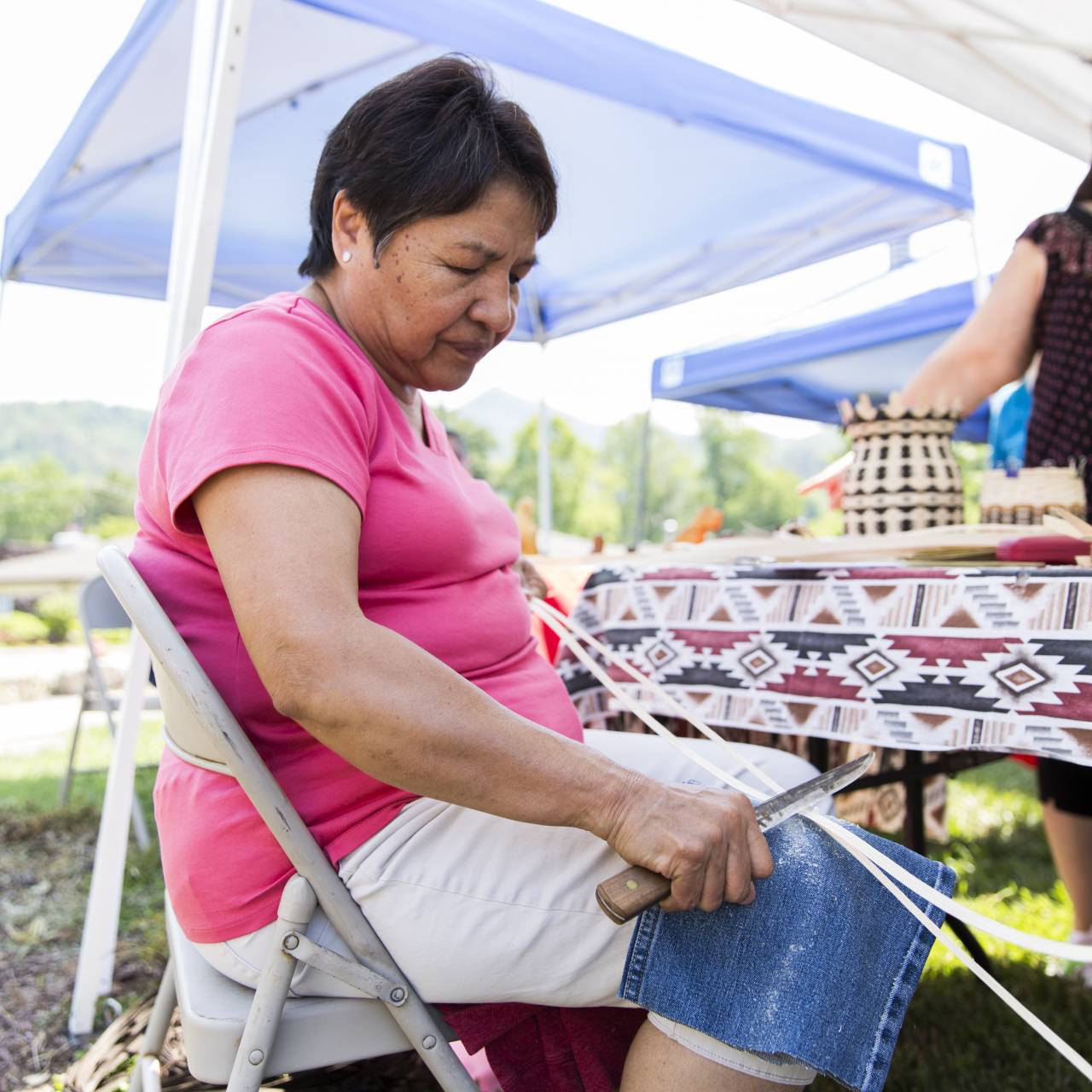
“A lot of people, you hear them say ‘Cherokee pride,’ or ‘I’m proud to be Cherokee,’ but the Cherokee never had pride. They had honor,” says Sonny Ledford, (pictured below), one of the members of the Warriors of AniKituhwa. “When you’ve got honor about being created the way you have, and having language and culture, and ceremonies—all those things that haven’t changed—it’s an honor to be gifted with those things and pass them on.”
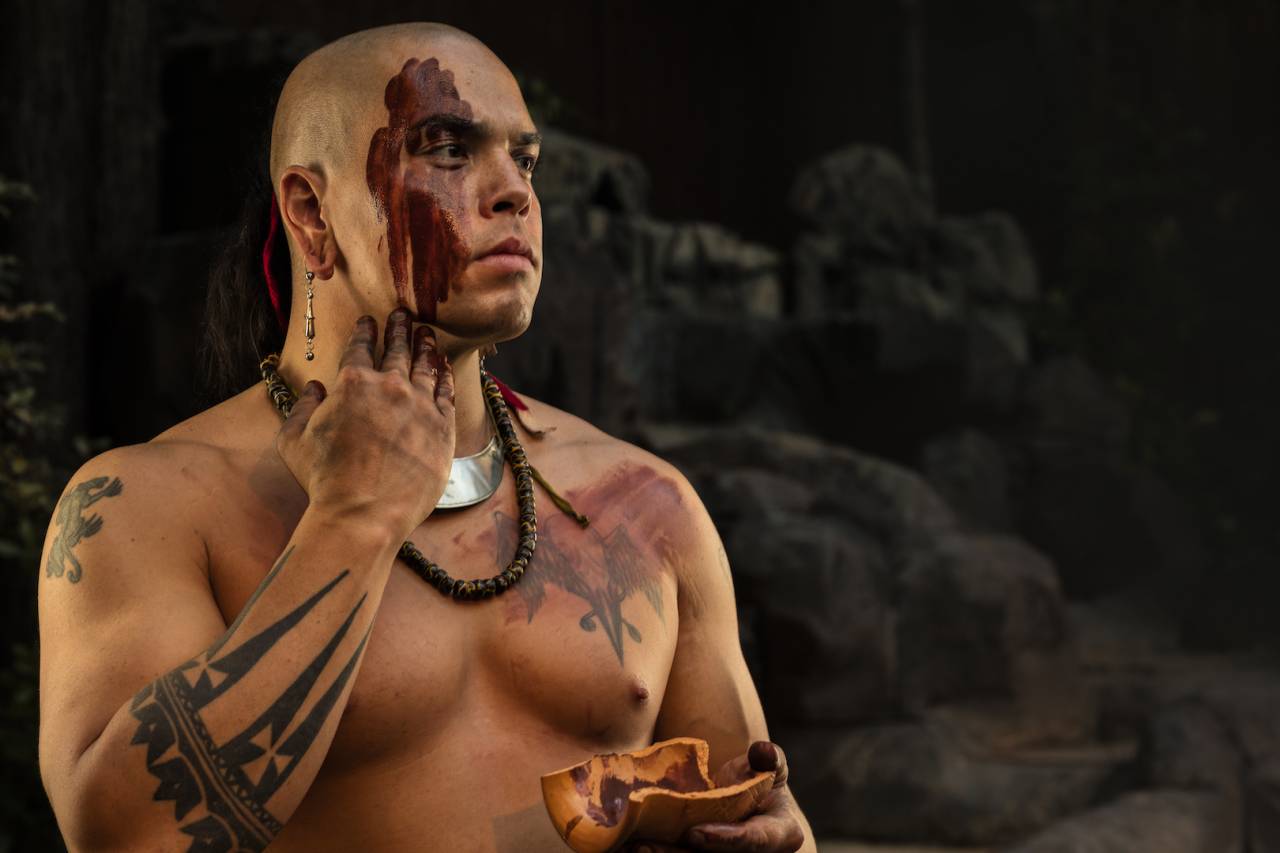
“We’re still here, we’re still Cherokee. We speak our language, dance our songs, know our history, our culture, our arts. We are Cherokee,” says Mike Crowe, (pictured), an EBCI native who has performed in the outdoor drama, Unto These Hills, for the last 12 seasons. “I feel it’s a duty to our ancestors to bring these events to life and to allow the outside world to have a perspective on the events that transpired, and how they’ve shaped us as a people.”
“We want to look to the future and the present and represent Cherokee as a living culture,” says Hope Huskey, co-organizer of the Kananesgi art festivals highlighting Cherokee artists and providing a marketplace for their creations.
“I think The Fire Mountain Trail System (shown) is a world-class trail system for our Eastern Band members and for the regional outdoor community as a whole. The fanfare and success to this point has far exceeded my expectations and I hope it’s only the beginning.” says Jeremy Hyatt, the Secretary of Administration for the Eastern Band of Cherokee Indians.
